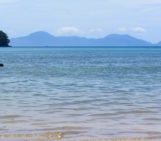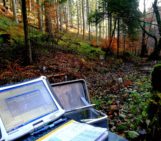
Did you know that, the EGU, through Copernicus Publications, publishes 17 peer-reviewed open-access journals? The journals cover a range of topics within the Earth, planetary and space sciences: with publications spanning the cryospheric sciences, soil system sciences, through to non-linear processes in geophysics, there is something for everyone. Whatever your area of research, chances are you’ll be represented within the range of EGU publications!
Better still, the EGU is a signatory of the Berlin Declaration. This means we believe that scientific literature should be publicly available and free of charge. Anyone wishing to read, download, copy, distribute, search or print research findings is able to do so without encountering any financial, legal or technical barriers. Authors of research articles are fully protected, too! They retain full copyright for their work via the Creative Commons Attribution License, which requires that full credit for any distribution of the research is given and any changes made to figures and or/data is highlighted, too.
Most EGU Publications also extend the traditional peer-review process by applying the Interactive Public Peer Review system. This means that a manuscript is subjected to two stages of review. The figure below helps to illustrate the process.

Two-stage public peer review as practised in the scientific journal Climate of the Past (CP) and its discussion forum Climate of the Past Discussions (CPD). 1. Submission; 2. Access review; 3. Technical corrections; 4. Publication as Discussion paper; 5. Comments; 6. Final response; 7.Post-discussion editor decision; 8. Revisions; 9. Peer-review completion; 10. Final revised publication.
In the first stage, the manuscript undergoes a rapid pre-screening and is immediately published as a ‘discussion paper’, in the journal discussion forum. During the next eight weeks or so, the paper is reviewed by the referees, as well as the scientific community. Referees and other scientists can leave comments which are published alongside the paper. The referee’s comments can be anonymous, or signed, whilst the public comments are always signed. Authors can actively participate in the discussion by clarifying remarks and offering further details to those reading the discussion paper.
The second stage of review follows: if the editor is satisfied with the author’s responses to the comments, the manuscript can be accepted for publication. If the editor still has some concerns about the publication, further revisions will be carried out until a final decision is reached. If necessary, the editor may also consult referees in the same way as during the completion of a traditional peer-review process. In order to increase transparency, some journals also publish a report that documents all changes to the paper since the end of the public discussion.
The system offers advantages to the authors, referees, editors and even the reader. The publication of the ‘discussion paper’ means that research is rapidly disseminated. Added to which, the interactive peer review and discussion means that authors receive feedback directly and can participate in the discussion. The final published research undergoes a full peer-review process, in addition to comments from other scientists, assuring the quality of the research, that is published in EGU journals.
On average, it takes approximately 200 days for a manuscript to complete its journey from submission to publication. However, this time can vary from journal to journal and manuscript to manuscript. This video, produced by our publisher Copernicus, shows the review times for various EGU Journals. Not only that, the average length of time the manuscript spends at each of the stages from submission to publication is broken down, too.
Maybe next time you come to publish your research findings you’ll consider submitting your manuscript to one of the EGU journals. You can learn more about the EGU publications by following this link. To submit your manuscript, head over to the website of any of the EGU journals, and look for the author guidelines and resources for reviewers.
Some food for thought to finish off this post: Have you ever considered the global journey a manuscript goes on after it is submitted? Using an article from Atmospheric Chemistry and Physics, Copernicus produced a video tracking its globetrotting journey: from its birth in Norway and collaborations in eight different countries, to its editor in Switzerland and referees spanning Europe and Asia, the global impact of this manuscript is truly remarkable.
Did you know you can follow many of the EGU journals on Twitter, too? With links to useful journal information, highlight and discussion papers, the social media platform provides a quick way to keep up to speed with the journals. Please follow this link to find out which journals are on Twitter.
Do you have any questions about EGU journals that were not answered in this post? Get in touch through the comments below.
References
Pöschl, U.: Multi-stage open peer review: scientific evaluation integrating the strengths of traditional peer review with the virtues of transparency and self-regulation, Frontiers in Computational Neuroscience, 6, 33, 1-16, doi:10.3389/fncom.2012.00033, 2012.




